AT THE HEART OF CALABRIA
Four nature parks
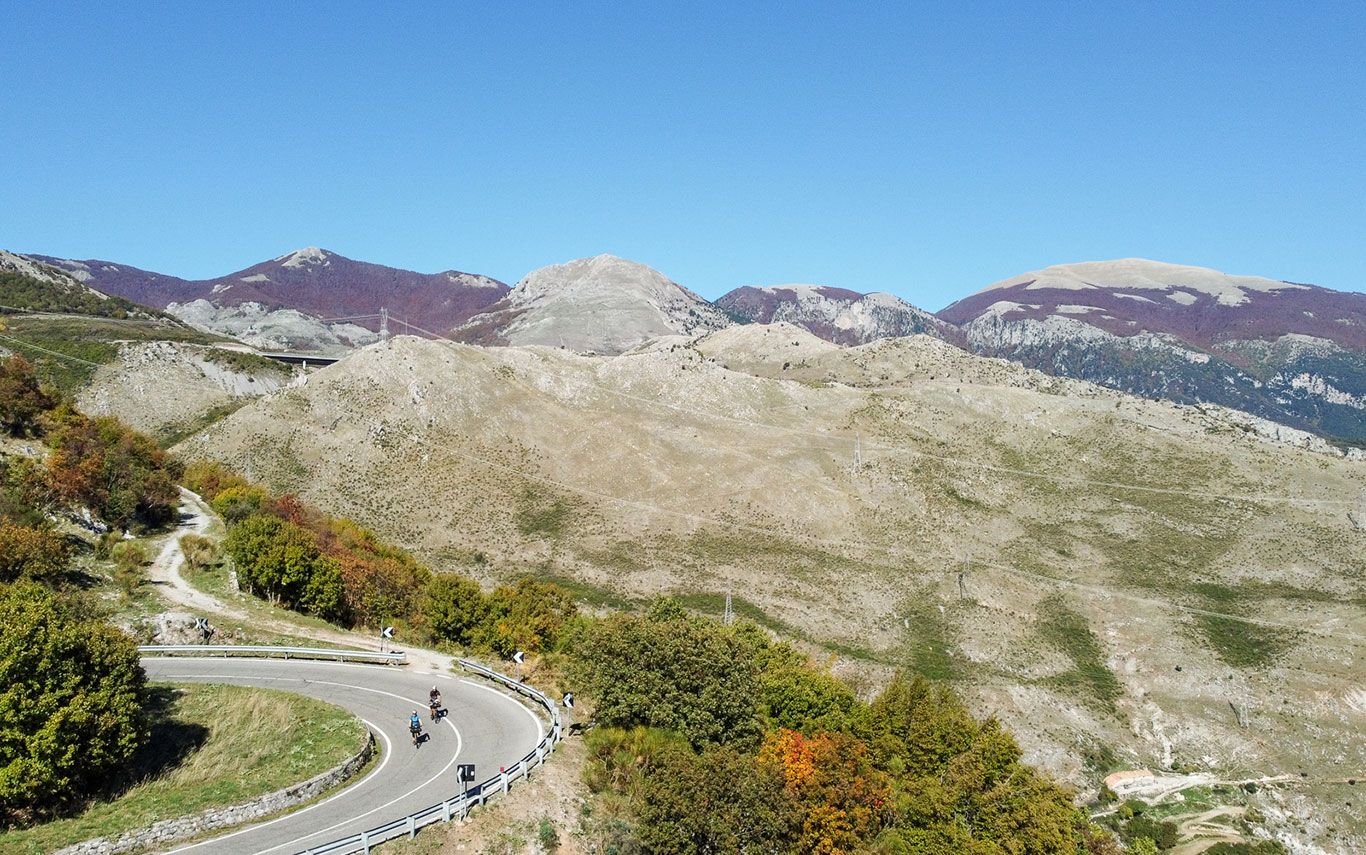
Pollino National park
The Pollino National Park is a unique ‘stage’ where nature’s marvellous scenery bewitches the viewer amidst breathtaking landscapes and majestic peaks. Here the sacred Patriarchs dominate, the tenacious and silent memory of a thousand-year history.
The Pollino National Park, with its 192,565 hectares, is the largest newly established protected area in Italy. Straddling Calabria and Basilicata, the Park’s territory, which includes 56 municipalities, is characterised by several mountain massifs that make up the southern Apennine chain: the Pollino Massif, the Orsomarso mountains and Mount Alpi. Here, amidst the high peaks, Nature and Man interweave millenary relationships that the Park, established in 1993, preserves and protects under its emblem: the Loricato Pine. In 2015, the Park became part of the European and Global Network of Geoparks under the aegis of UNESCO, which, in 2017 and 2021 respectively, included the Faggeta Vetusta di Cozzo Ferriero and the Faggeta Vetusta del Pollinello in the Transnational Site of the ‘Ancient Primordial Beech Forests of the Carpathians and other European Regions’, proclaiming them World Heritage Sites. A precious environment to be discovered and experienced through one's sporting passions or on a bicycle.
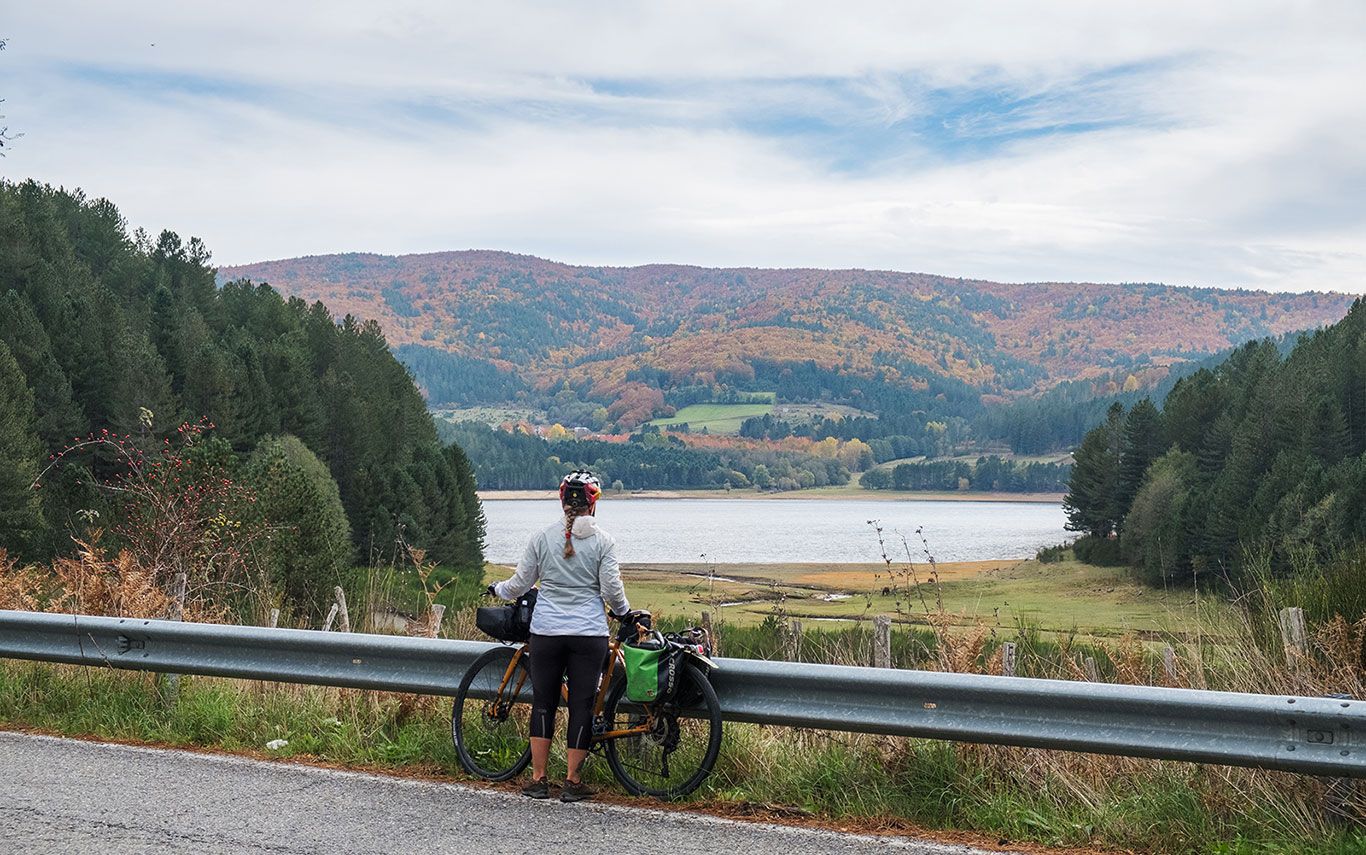
Sila national park
The symbol of this park located at the heart of Calabria is the wolf, which has been repopulating this enchanting place, its mountains and valleys. Wonderful plants and a wide range of animals live in this protected area, which features one of the most interesting biodiversity heritages in Italy. Walk or cycle through some wild scenery, that changes with the seasons and the altitudes. Enjoy spectacular colours and shades while you’re riding along rivers and streams. Discover the park’s ‘green patriarchs’: unique heritage trees, which live in a perfect balance with the surrounding environment, help temper the climate and make the landscape even more beautiful. The 70,000 square kilometres of the park offer multimedia and interactive museums, where visitors can explore natural and cultural words, visitor centres, restaurants and farms. But above all, here you can play endless outdoor activities, that are in harmony with nature and its balance: not only bikes, but also horseback rides, cross-country skiing in winter, orienteering and photography.
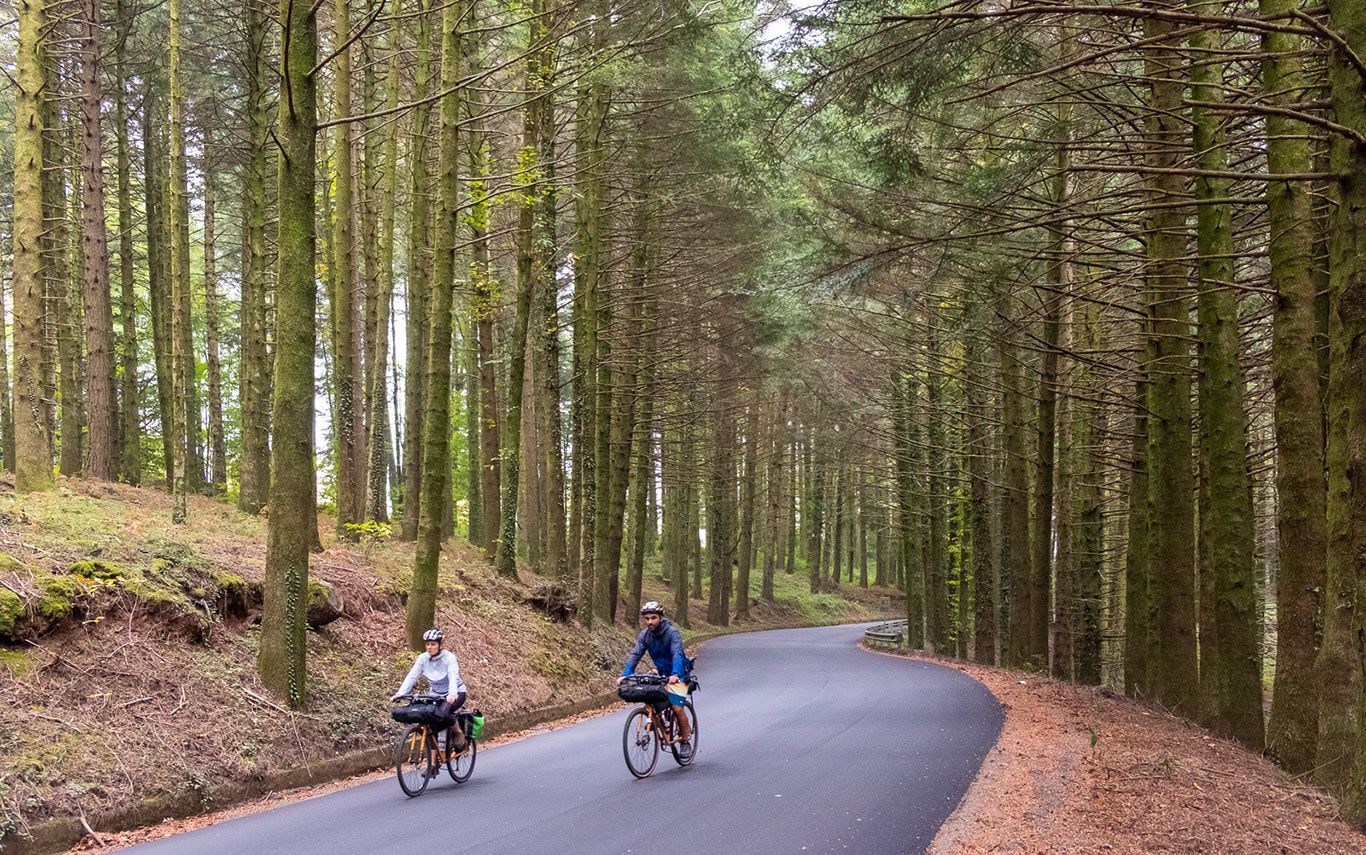
serre regional natural park
The Serre mountain complex is located between the Sila and Aspromonte mountains. It is a varied mountain group, where valleys and woodlands give way to rivers and many water sources. In the eastern part of the Serre, peaceful water streams suddenly become wild torrents that create spectacular gorges, narrow canyons and wonderful rainfalls such as the Marmarico and Assi’s rainfalls. Many animals populate this area: wolves, porcupines and wildcats are all symbols of this fascinating land. Moreover, this area is characterised by ancient handicraft production, such as wool and silk production, as well as woodworking. Here, you can make a journey through authentic wonders of nature and discover unique and hard-to-find handicraft products, such as the pipes of Brognaturo and the terracotta pots for cooking and storing food items made in Sorianello and Gerocarne.
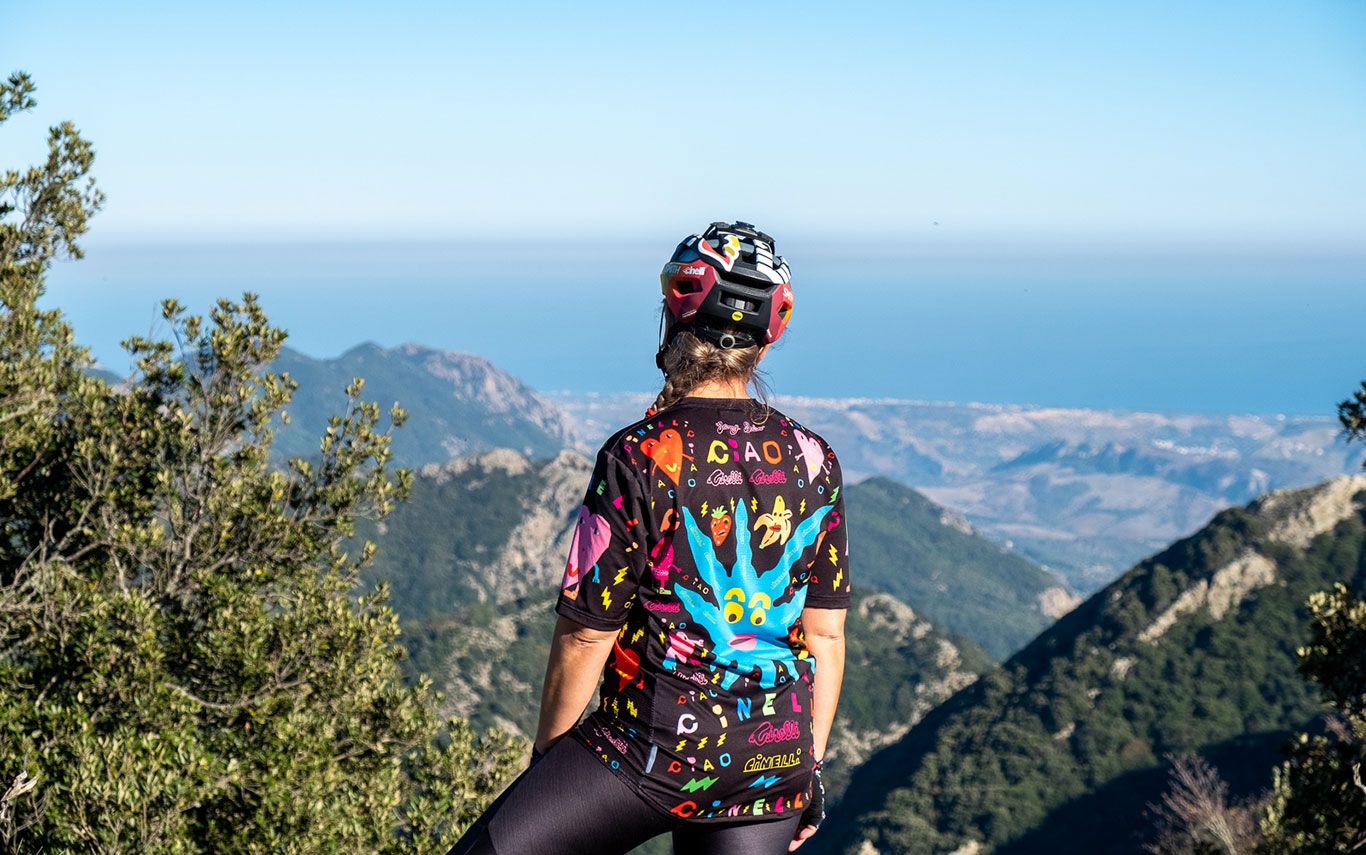
aspromonte national park
The park is full of awe-inspiring cycling and horse-riding routes. Nature is the undisputed star of this reserve. Thanks to the presence of many water streams, the lush vegetation varies from beech woodlands to splendid oleanders and tamarisks, which grow along the coastline. If you climb up to 2000 m, you will find yourself surrounded by fabulous forests where European larches - the symbol of the Aspromonte - grow.
Exploring this park also means taking a journey into discovering the gastronomy of Calabrian mountain areas, which is based on a typically agricultural and bucolic economy that produces highest-quality products such as bergamots.
During you ride across the Aspromonte you can look for rare products such as the pecorino cheese of Grecìa Calabra (Calabrian Greece), which is made using a special wooden mould known in Italian as “musulupa”, which leaves on the cheese a circular print depicting humans and dolls. And last but not least, you shouldn’t miss the traditional “maccaruni ‘e casa” - traditional maccheroni, which are made by wrapping a small piece of pasta round a reed or a knitting needle - and the Italian-style cured meats: capocollo, soppressata, ‘ndujia (a spicy, spreadable salami) and sausages.
Places you must visit
-
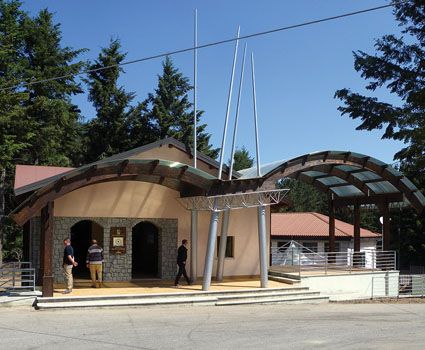
The Water and Energy Museum Visitor Centre
Sila National ParkThe Water and Energy Museum Visitor Centre is located in Trepidò, in the municipality of Cotronei, province of Crotone. The building was an environmental requalification as well as a building refurbishment. The Museum uses interactive technology to inform visitors about issues such as water resources and the use of renewable energy sources.
-
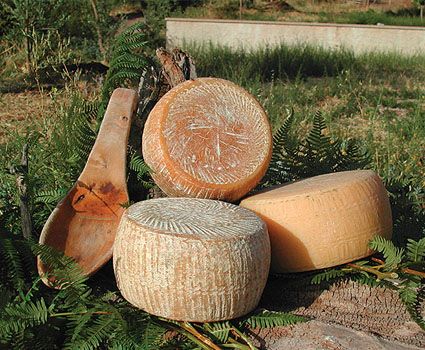
Morano Calabro: Sweet pastures AND dairy products
Pollino National ParkThe Felciata (or “ ‘a filicèta” in Moranese dialect) gets its name from the felci (ferns) that give this cheese its extraordinary aroma. It is eaten when it is still warm. The felciata is produced with goat’s milk in the summer, when the pastures are able to give the milk its wonderful aromas, scents and flavours. It is so delicious that the locals call it Pane degli Angeli (the Bread of Angels).
-
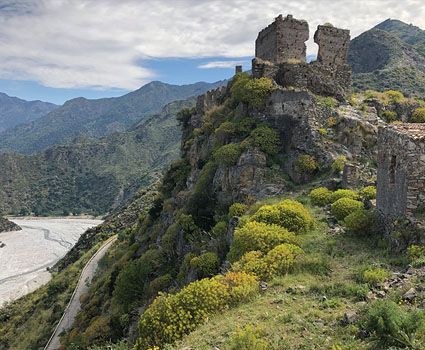
Flora and Fauna
Aspromonte National ParkThe Park has about 1,500 species of flora. In some areas we find the Woodwardia radicans, a relic of the Tertiary Period. The forest formations are: macchia, holm oaks, deciduous oaks and beech woods, sometimes mixed in with silver firs and yew trees. Recently the beech forest of Valle Infernale has become a candidate to join the UNESCO network of beech forests. The wealth of fauna is also impressive. The area’s mammals include the wolf, the wildcat, the forest dormouse, the southern squirrel, the marten, the badger and the Italian hare. The Italian roe deer was reintroduced at the 2011. Among the Park’s reptiles you will find the Hermann’s tortoise. Amphibians include the spectacled salamander and the Apennine yellow-bellied toad.
-
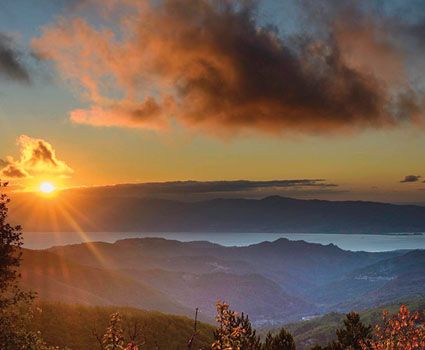
GAMBARIE AND BIODIVERSITY OBSERVATORY
Aspromonte National ParkGambarie is a mountain resort of the municipality of Santo Stefano in Aspromonte, located at an elevation of 1,350 meters, and the heart of the Aspromonte National Park. It is an important winter tourist resort, famous for its slopes, ski lifts, natural environment and beautiful landscapes. The Observatory for Biodiversity, located in Cucullaro, was established to inform visitors about the Aspromonte flora, fauna, habitats and ecosystems.
-
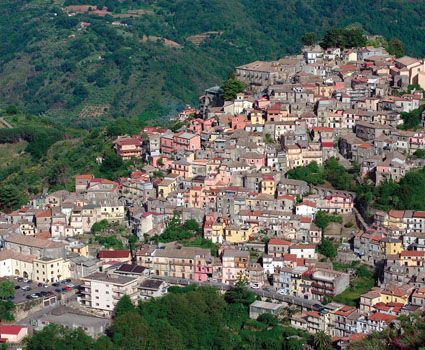
TIRIOLO
Sila National ParkTiriolo stands on the hill that marks the watershed between the valley of the Amato River on the Tyrrhenian side and the Corace River on the Ionian side. It was founded by the Greeks and its name comes from the Greek word Tryoros, referring to the 3 mountains that surround it. From this spot you will be able to admire two seas, the Tyrrhenian Sea and the Ionian Sea, and on clear days even the Aeolian Islands.
-
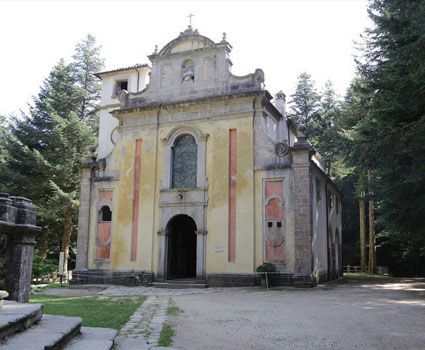
The Marian Sanctuary of Santa Maria del Bosco
Serre Regional Natural ParkThe Sanctuary in Santa Maria del Bosco takes its name from the church of Santa Maria, which stands at the centre of gigantic white fir trees, where the founder of the Carthusian Order did penance and was buried. An artificial lake evokes this thaumaturgist Saint’s moments of solitary prayer.
-
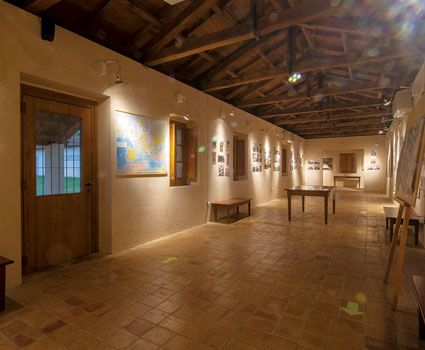
The Ferramonti Memorial Museum in Tarsia
Pollino National ParkFerramonti was the largest Italian fascist concentration camp where Jews, anti-fascists and political refugees were interned. In 2004, the Ferramonti Memorial Museum in Tarsia was inaugurated at the site. The Museum was established as a memorial and to inform visitors about the history of the concentration camp.
-
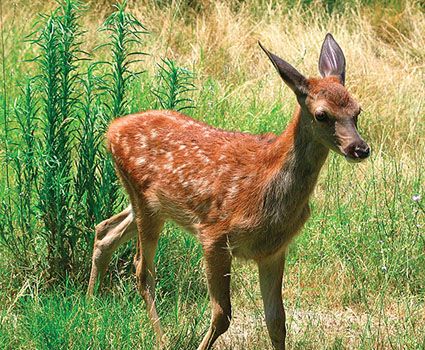
Lungro - the mountain and its inhabitants
Pollino National ParkThe mountainous area of Lungro is on the slope of the so-called “Monti dell’Orsomarso” and is covered by extensive beech woods. At elevation of 1000 meters and above the beech trees are joined by black pines or even the more rare pino loricato. Amongst the rich fauna that lives here we find the indigenous roe deer, which still live in this strip of southern Italy thanks to the conformation of the land and the extensive and intricate forests.
-

The Carthusian monastery of Serra San Bruno
Serre Regional Natural ParkThe Carthusian monastery of Serra San Bruno was the first Certosa (Carthusian monastery) in Italy, and the second of the whole Order. It is located in a picturesque wooded area on the outskirts of Serra San Bruno. It was founded between 1090 and 1101 by Brunone of Cologne, founder of the Carthusian Order and the Grande Chartreuse near Grenoble.
-

Angitola LAKE
Serre Regional Natural ParkThe natural oasis of Lake Angitola is one of the Mediterranean’s most important natural reserves on an artificial lake. In 1966 the lake was created on the old bed of the Angitola River and from the Nia and Reschia streams. It was declared an oasis and protected by Italian decree D.P.G.R. n. 557 of May 12, 1975. This is the only Ramsar area, a wetland of International importance, in the Calabria region.
-
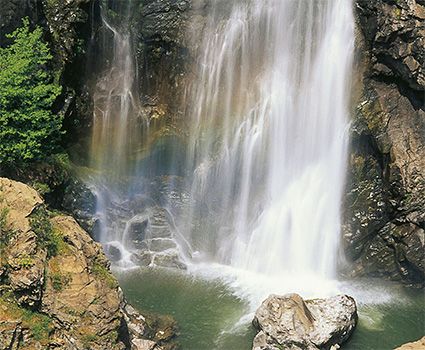
MUNDU AND GALASIA FALLS
Aspromonte National ParkThe landscape surrounding these clear lakes, with water that falls over granite rocks that have narrow gorges, is characterised by rich vegetation consisting of oaks, holm oaks, beeches, large lianas of vitalba and rare varieties of ferns including the European chain fern (Woodwardia radicans). The torrent produces considerably large waterfalls. The most beautiful are the Mundu waterfall and the Galasìa which is at a higher elevation.
-
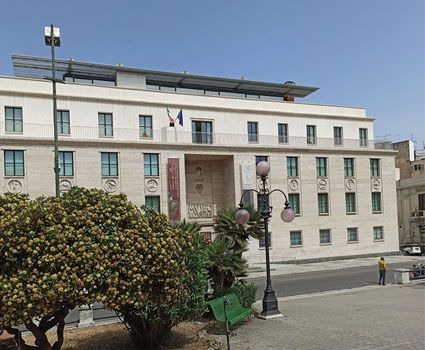
NATIONAL REGGIO CALABRIA ARCHEOLOGY MUSEUM
Aspromonte National ParkThe building that houses the National Museum of Magna Grecia is home to the Riace Bronzes. They are among the most beautiful examples of classical Greek art. The bronze statues depict two nude men, originally armed with a shield and a spear, which have become the symbol of the city of Reggio Calabria. The Museum was built between 1932 and 1941 and is one of the most important museums of that historical period. It houses a vast number of finds from all over Calabria.
-
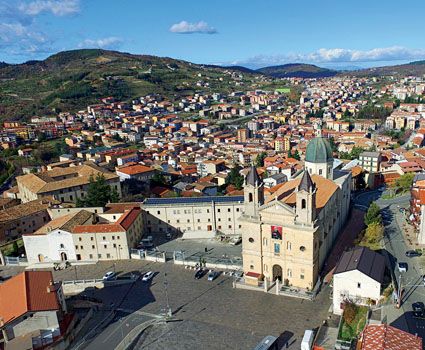
Basilica of St. Angelo d'Acri
Sila National ParkThe construction of the basilica began in 1893, under the direction of Guido Quercioli, and it was finished in 1898. Inside there are twelve aristocratic chapels, and the central chapel has an urn made entirely of bronze and glass that has the recomposed body of the Saint. The interior of the basilica is frescoed with depictions of the miracles attributed to the Saint. The cupola is 32 meters tall with two towers and bronze copper plated bells.
-
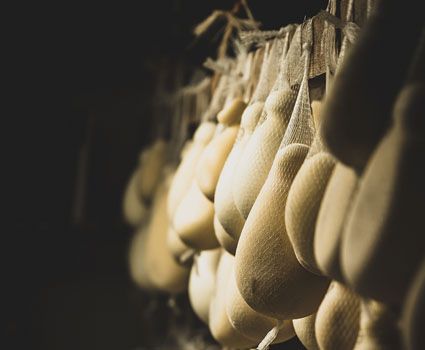
TYPICAL FOOD AND WINE
Aspromonte National ParkThe many areas of the Park have typical products that come from pastoral and farming traditions. Traditional foods are capocolli, soppressate and cured meats with chilli pepper and fennel. The huge white Pappaluni, which are Aspromonte beans, are grown in the Mid-High areas of the park. The climate is also ideal for the cultivation of the delicious Aspromonte potatoes. The caciocavallo cheese in Ciminà is quite famous, as is the ricotta and the Pesce Stocco (stockfish), known as “a fish that comes from a place that has no sea”, which has always been very popular in the inland areas of Calabria.
-
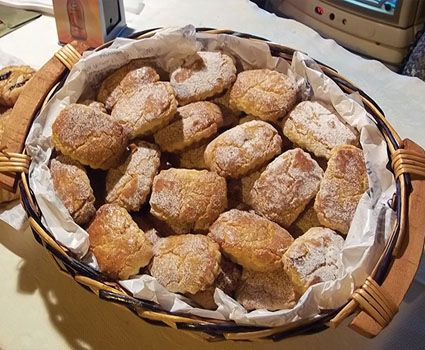
MORMANNO: BOCCONOTTO
Pollino National ParkWhether oval (the most common) or round or shaped like a canestrello (basket), the Bocconotto di Mormanno is a true pleasure for the palate, with tasty shortbread melting in your mouth and leaving room for the excellent filling that will vary according to the creativity of pastry chefs and consumer preferences.
-
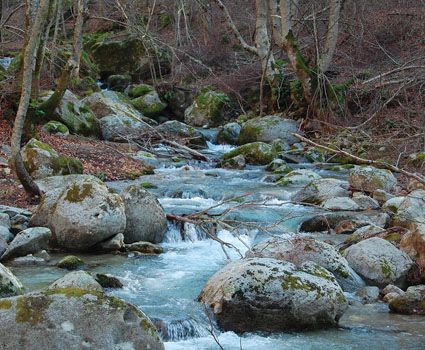
MONTEROSSO CALABRO
Serre Regional Natural ParkThe name Monterosso derives from the ferruginous mine that was used to dye fabrics. There is an important museum dedicated to farming life (with 3000 items) that has created a link between the culture of our ancestors and younger generations.
-
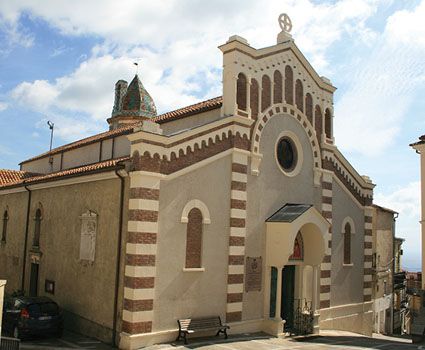
The Church of St. John the Baptist
Pollino National ParkThe Church of St. John the Baptist in Acquaformosa, was built at the beginning of the 16th century by the first Albanian refugees. The building has three naves inside and they are almost entirely covered by stunning gold mosaics, whose value goes far beyond that of the precious materials of which they are made. The church also has an iconostasis, a decorated wall that divides the altar from the rest of the church.
-
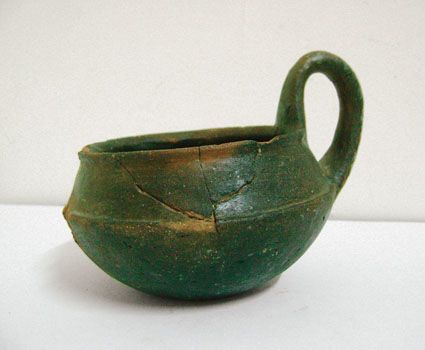
San Sosti Museum
Pollino National ParkThe “Artemis” museum of the 56 municipalities of the Pollino National Park is located in San Sosti (CS), at the South-Western entrance to the Park. It is located in an ancient medieval prison, which was used as a detention centre until the year 2000. It was restored with funds from the Park Authority and now displays themed archaeological exhibits.
-
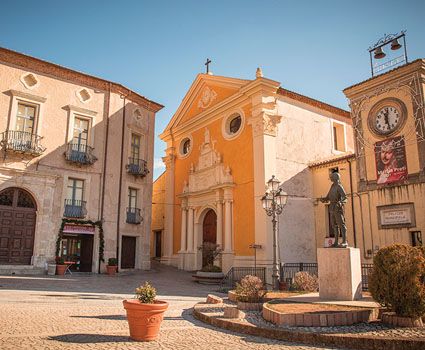
TAVERNA
Sila National ParkTaverna was founded in the 9th century and is located in the bed of the Alli and Litrello rivers. The Civic Museum has works by Mattia Preti as well as contemporary artists such as Ercole and Lia Drei, Francesco Guerrieri and Carmelo Savelli. There are numerous monasteries and noble buildings in the village. The Convent of San Domenico, the Gironde-Veraldi, the Abbey of Santa Maria di Peseca and the ruins of the Torre di Guardia (Watchtower).
-
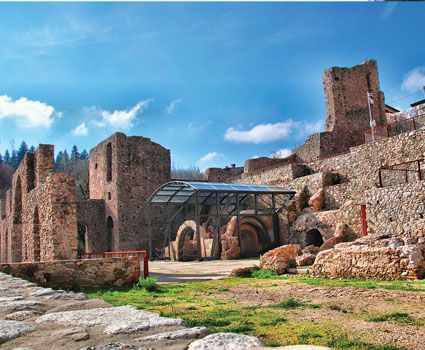
Iron Foundry in Mongiana
Serre Regional Natural ParkEstablished in 1771 under the reign of Ferdinand IV of Bourbon, the iron foundry in Mongiana was used for war production and it was active in the field of civil engineering. Its furnaces made the iron for the suspension bridges over the Garigliano (Ponte Real Ferdinando) and Calore (Ponte Maria Cristina) Rivers and for the rails of the first Italian railroad, Naples-Portici.
-
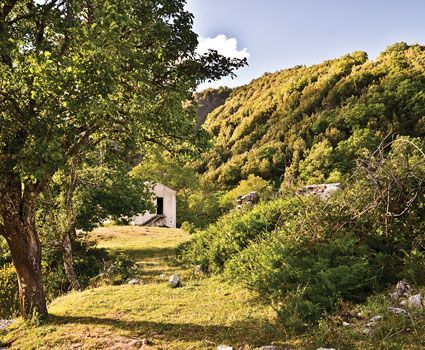
MUSEO DELLE SERRE
Serre Regional Natural ParkIn Monterosso you will also be able to visit a multimedia museum called “Museo Multimediale delle Serre Calabresi”, where you can see historical photographs of the flora and fauna, the territory, urban planning, architecture; and information about the society, work, food and the dialect.
-
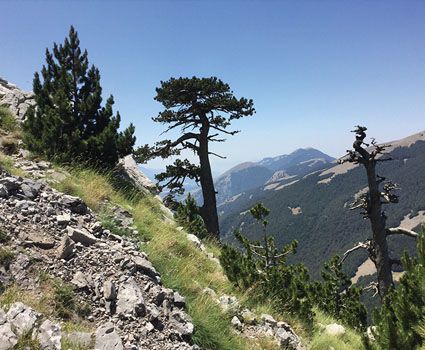
Pollino National Park Service Centre
Pollino National ParkThe Castrovillari Service Centre is located in the historic Palazzo Gallo. Its location makes it even more prestigious, with its immersive room in which you can admire the spectacle of Park images and descriptions of everything you will find here, from nature, history and culture to sports, food and wine.
-
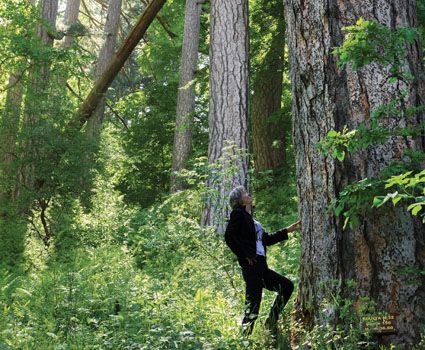
I Giganti di Fallistro-Biogenetic Nature Reserve
Sila National ParkThe Nature Reserve located in Fallistro in the area of Spezzano della Sila and near Croce di Magara is about 5 hectares. Its forest has centuries-old pine trees, some of which are over 40 metres tall, and they stand before a nearby spinning mill that dates back to the 17th century. In addition to the 53 specimens of “giant” larch pine, you will see specimens of beech, sycamore maple and white poplar.
-
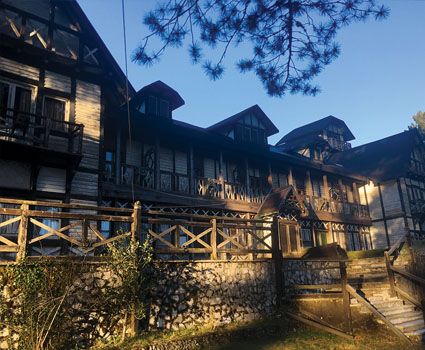
Mancuso Village
Sila National ParkVillaggio Mancuso was founded during the first decades of the 20th century as a holiday getaway for the citizens of Catanzaro, in one of the most beautiful areas of Sila. It is located in the Femminamorta and Gariglione mountains. There are small wooden houses with black and white slats reminiscent of Swiss cabins as well as hotels and recreational activities.
-
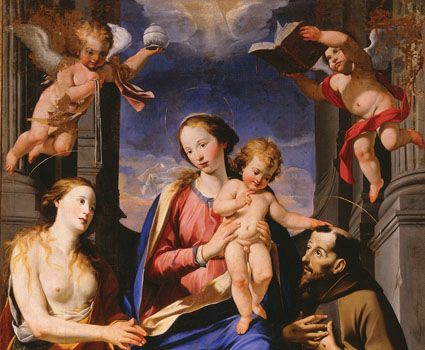
MATTIA PRETI
Sila National ParkMattia Preti, also known as Cavalier Calabrese, was born in Taverna in 1613. He arrived in Rome at the beginning of the 1630s, coming into contact with Caravaggio and the Caravagesques.In 1661 the artist settled in Malta where, as the official painter of the Knights of the Order, hedecorated St. John’s Cathedral in Valletta with paintings of the Stories of the Baptist. He was alsocommissioned for numerous other paintings for the churches on the island.
-
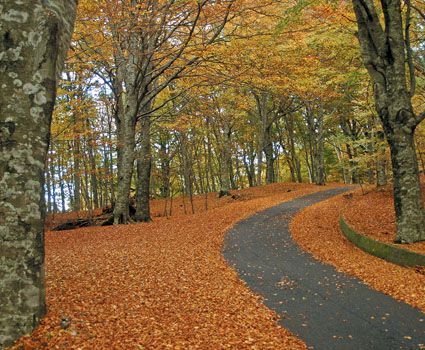
LORICA (SAN GIOVANNI IN FIORE)
Sila National ParkLorica is a tourist resort located in the wide valley of Lake Arvo in Sila Grande. It touches two municipalities in the province of Cosenza: San Giovanni in Fiore and Casali del Manco. Lorica lies at an elevation of 1314 metres . When you visit you will be able to tackle various sports, from canoeing on the lake to skiing on Monte Botte Donato (elevation 1929 m).
-
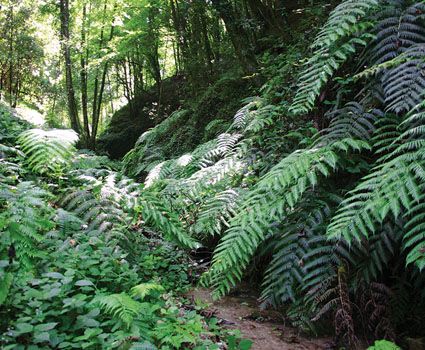
ZOMARO BOTANICAL MUSEUM VISITOR CENTRE
Aspromonte National ParkLocated in the Central-North area of the Park, within the municipality of Cittanova, at about 1,000 m above sea level, this museum features educational activities and information about Aspromonte’s unique flora. The Centre is equipped with a herbarium of about 200 types of flora from the Aspromonte area, with exhibits explaining the park’s landscapes, models of cells, plants, and parts of plants that can be useful for research. There is also an interactive multimedia whiteboard.
-
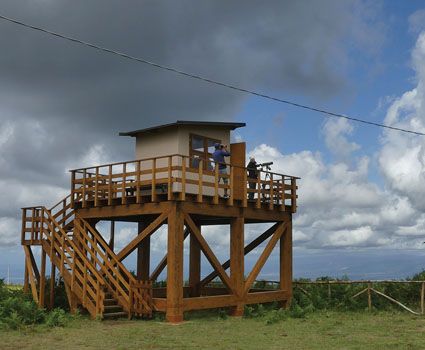
BIRDWATCHING
Aspromonte National ParkAspromonte is one of the privileged spots where we can observe migratory birds at the southern tip of the peninsula. It is a sort of springboard for tens of thousands of diurnal birds of prey and storks which, after nesting in Europe, must cross the Strait and head south to Africa for the winter. Since 2010 the Park has been monitoring and studying post-nuptial migration. Birdwatchers will be able to observe the migratory birds on a 4-metre high viewing platform located in the Aspromonte plains.
-
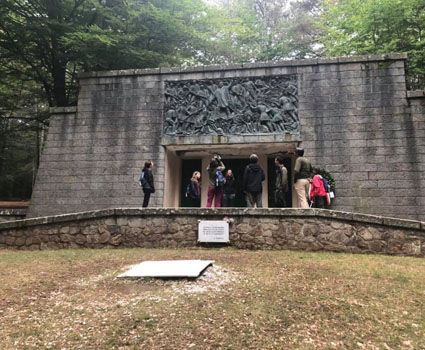
GARIBALDI’S MONUMENT
Aspromonte National ParkIn Sant’Eufemia d’Aspromonte, 7 km from Gambarie, a centuries-old pinewood still has the giant tree that a wounded General Giuseppe Garibaldi leaned on, on August 29th, 1862. There is also Mausoleum that the citizens built in his honour. The Mausoleum is in remembrance of the Landing of the Thousand and the Redshirts, led by the Italian hero of the two worlds, in 1862. A memorial stone indicates the exact spot, and you can still visit the pine tree that the hero leaned on after he was hit.
-
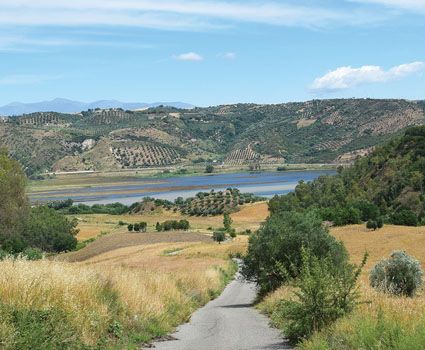
Lake Tarsia Reserve
Pollino National ParkThe Lake Tarsia Reserve is an important wetland area along the Crati River with a vast and diversified number of fish species. The reserve is home to many migratory birds. There are some remarkable diurnal birds of prey such as the brown kite, a nesting species, and the marsh harrier.
-
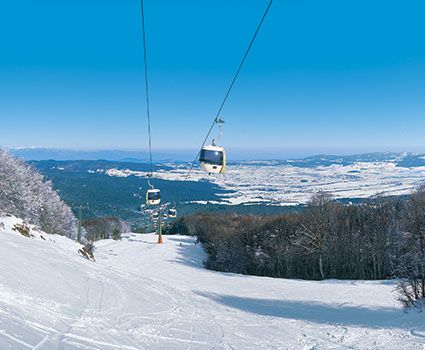
Camigliatello
Sila National ParkCamigliatello Silano, located at an elevation of 1,300 m above sea level, is one of the Sila areas that has the greatest number of tourists no matter the season. It has a modern ski lift for skiing in the winter and the summer. It departs from the station located in Tasso and takes you to Monte Curcio, at an elevation of 1786 m.
-
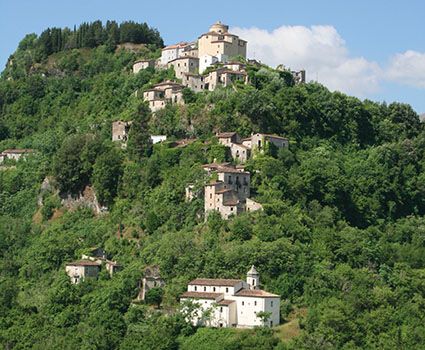
LAINO castle
Pollino National ParkThe ‘Laino Castello Vecchio’ is what we call today’s remains of the ancient settlement on the hill where, centuries earlier, the Lombards founded their impenetrable fortress, of which very little still stands today. The village still has some remains, including gates, towers and fortifications that were typical of the medieval structure.
-
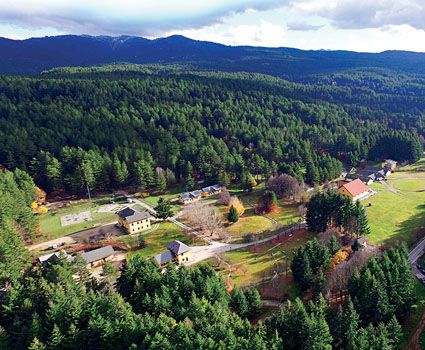
CUPONE VISITOR CENTRE
Sila National ParkThe Cupone Visitor Centre was established in the spaces adjacent to the old state-owned sawmill and its buildings. Today it is an environmental education centre with nature trails, wildlife observatories, a museum, and a geological garden. The nearby picnic area along Lake Cecita, make the Visitor Centre one of the most popular areas of the Sila National Park.
-
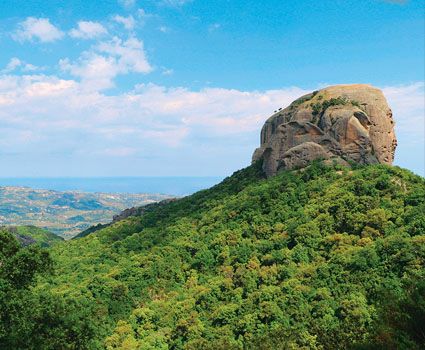
GEOPARK
Aspromonte National ParkThe Aspromonte GeoPark is part of UNESCO Global Geoparks, the UNESCO World Network of Geoparks, that has 89 geosites, 8 of which are International. The important components of the geological landscape of Aspromonte are the so-called Pietre (Stones), shaped by atmospheric agents, which look like natural monuments. The most spectacular are: Pietra Cappa (one of the largest monoliths in Europe), Pietra Lunga, Pietra Castello, Rocce di San Pietro, Rocca del Drako and Caldaie del latte.
-
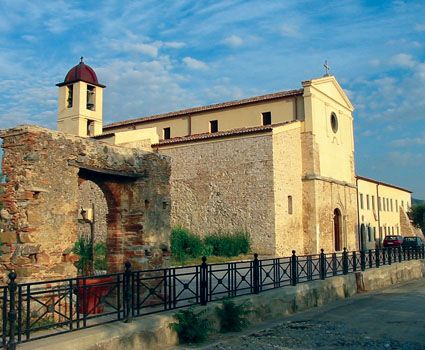
Sanctuary of Saint Humilis
Sila National ParkThe Sanctuary of Saint Humilis (Sant’Umile), known as “Convento la Riforma”, was founded by the Blessed Pietro Cathin, sent by St. Francis of Assisi. The portal, which dates back to the 15th century and is surmounted by the coat of arms of the Sanseverino Princes, leads us into the nave that culminates in the apse. Here we find the wood sculpture of Crucified Jesus, the work of Friar Umile of Petralia, dating back to 1637 (the year of Sant’Umile’s death).
-
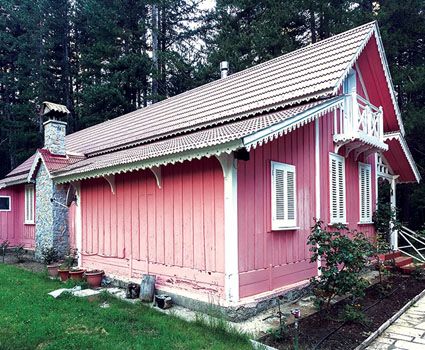
The village of Silvana Mansio
Sila National ParkThe village of Silvana Mansio, built in the 1930s in the municipality of Casali del Manco and located at an elevation of 1470 m is undoubtedly one of the most beautiful spots in Sila. It has managed to preserve the natural habitat intact, and 90% of homes look like wood cabins with an almost fairy-tale like ambiance. They fit in perfectly in the context of the one hundred thousand square metre forest.




